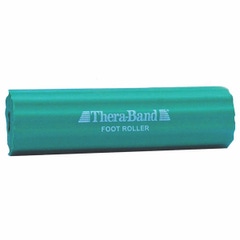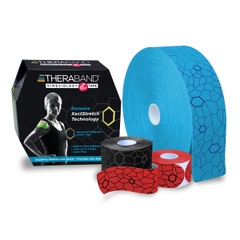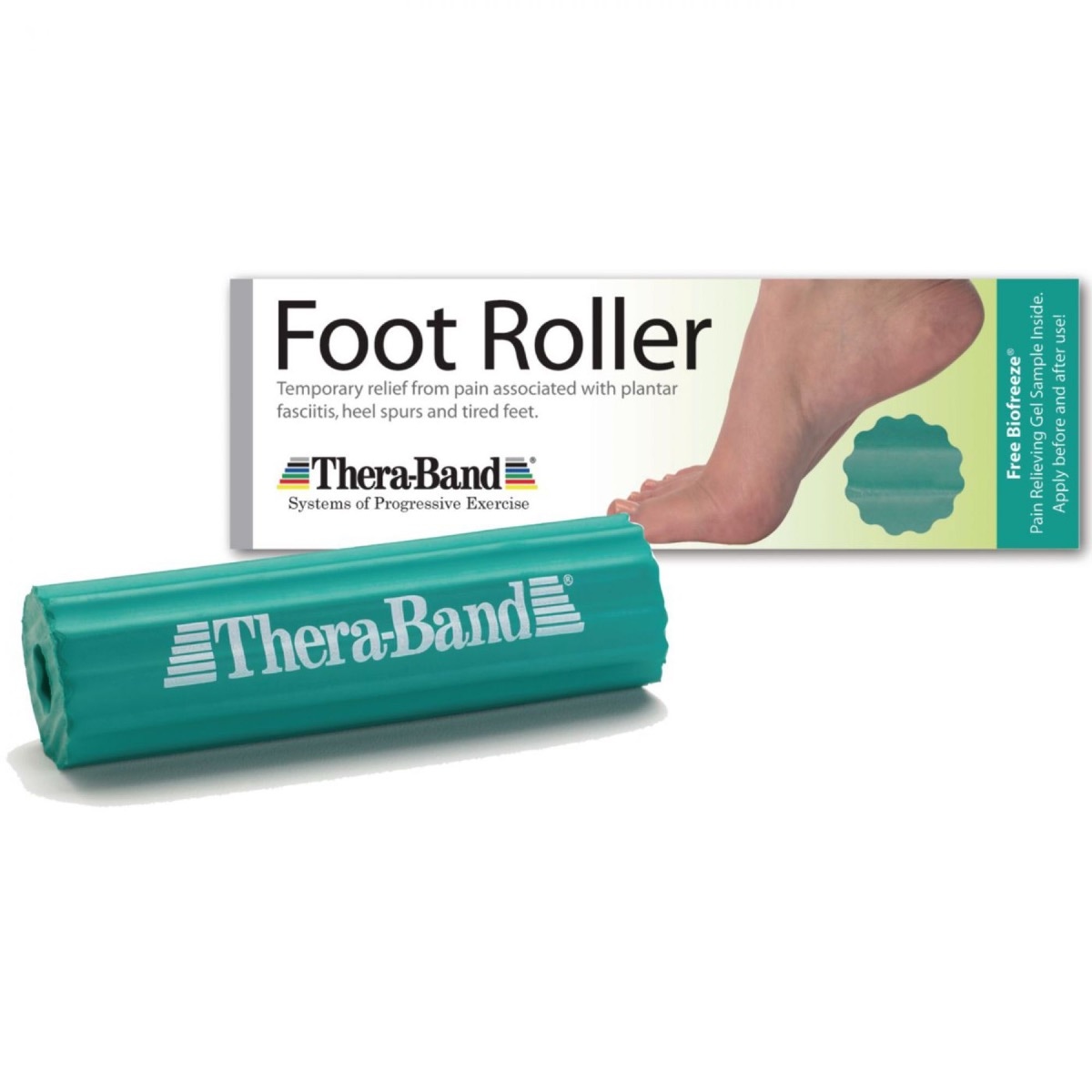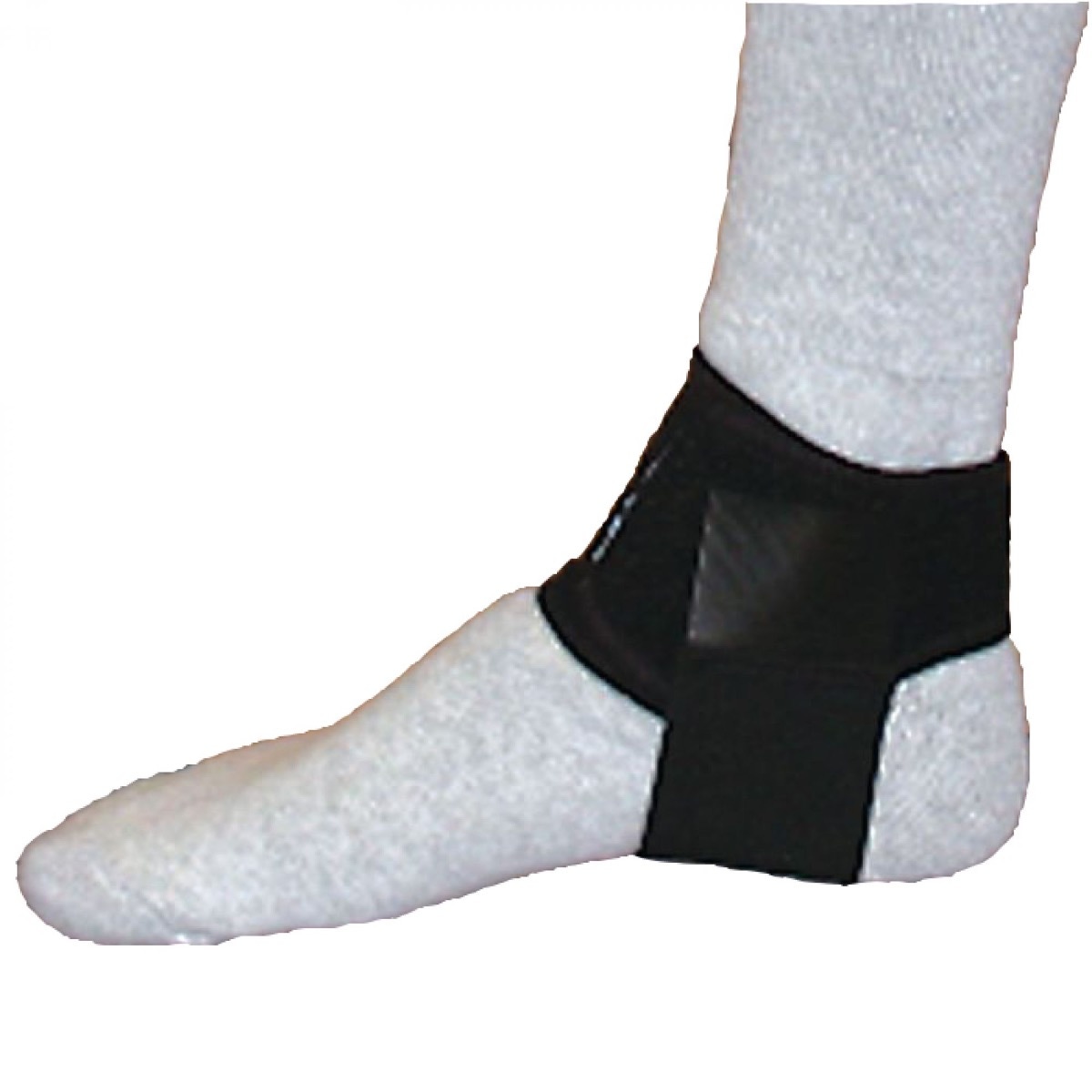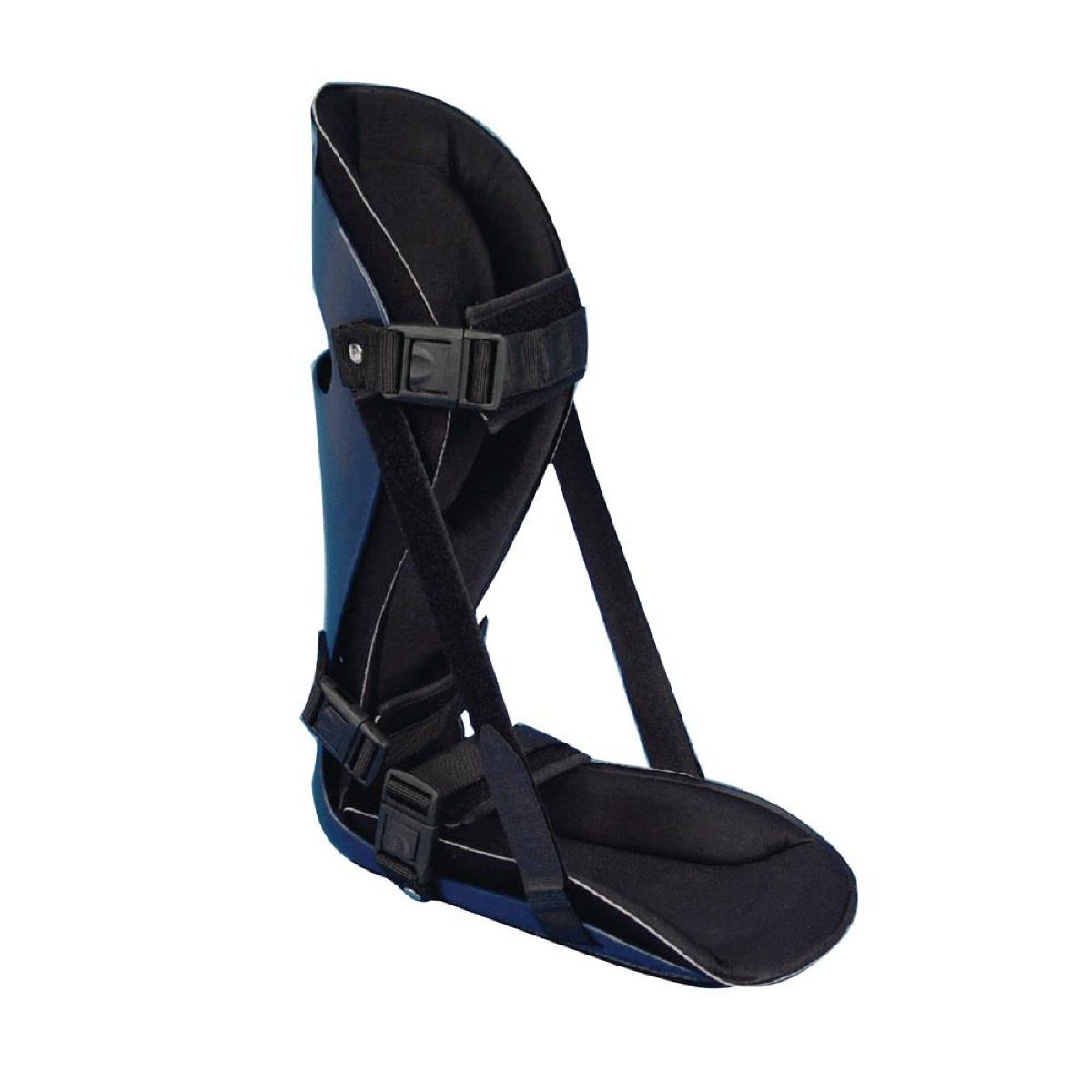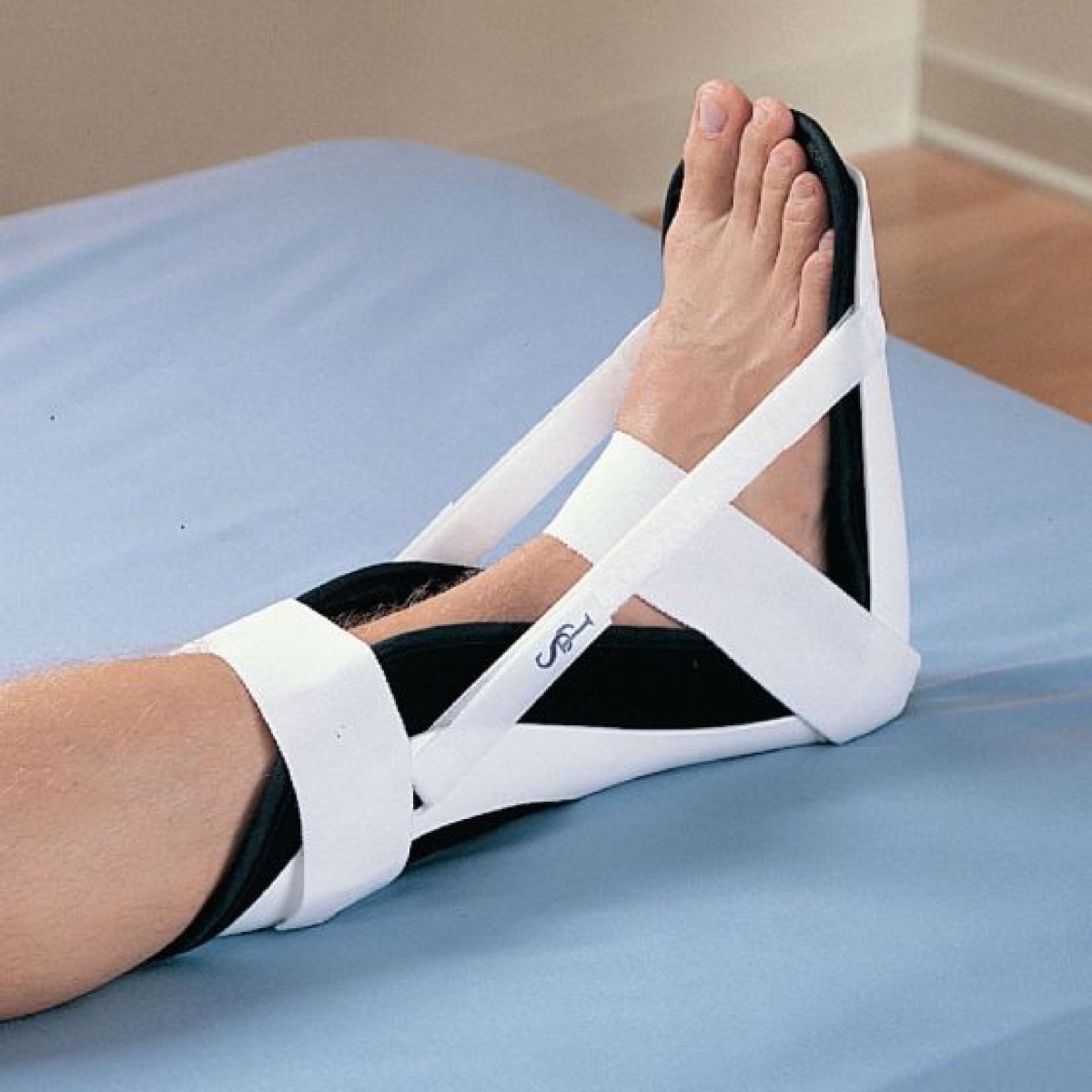Key Takeaways
- The most common causes of heel pain are plantar fasciitis (bottom of the heel) and Achilles tendinitis (back of the heel)5
- Over 2 million people in the U.S. suffer from heel pain every year1
- Heel pain occurs in different locations and may be worse at different times of the day depending on the cause
- Relieve your pain with pain relief products, stretch exercises, and help from medical professionals (if needed)!
Top Products in This Article
Heel pain is a common problem that affects over 2 million Americans a year.1 There are many possible causes of your pain, some of the most common include plantar fasciitis and Achilles tendonitis. Where your heel pain develops may help to discover the cause. Learn how to get quick relief now!
- What causes heel pain?
- When to See a Doctor
- 8 Common Causes of Heel Pain - Back vs. Under Heel
- 6 Common Causes of Heel Pain – Morning vs. Night
- Heel Pain Relief
- Heel Pain Exercises
- Learn More About Relieving Foot and Heel Pain
What causes heel pain?
Runners and joggers and older adults (40-60 years old) are the two main groups affected by heel pain.2
Depending on the cause you may feel more heel pain in the morning, at night, when walking, or in certain areas of your heel. These specifics can give clues to what is causing your heel pain. See a doctor to diagnose the specific cause of your heel pain.
When to See a Doctor
See a doctor right away if you:
- Have severe pain and swelling near your heel
- Can’t walk normally, bend your foot downward, or rise up on your toes
- Also have a fever, numbness or tingling in your heel
- Have acute heel pain immediately after an injury
8 Common Causes of Heel Pain - Back vs. Under Heel
Here are some common heel pain causes based on where the pain occurs.
Pain in the Back of the Heel

- Achilles Tendonitis: An overuse injury that inflames the tendon that runs from your calf muscle to your heel. It can cause pain, swelling, and stiffness in the back of your heel and is more common in runners, basketball players, and soccer players.
- Haglund’s Deformity: Chronic inflammation and irritation can cause a bony bump on the back of your heel. Wearing high heels can make the pain and bump worse.
- Bursitis: When fluid-filled sacs swell this can create a tender, bruise-like pain at the back of your heel. It usually occurs after spending a lot of time on your feet.
- Sever’s Disease (calcaneal apophysitis): An irritated growth plate due to lots of running and jumping can cause this heel pain. It’s most common in active kids from 8-14 years old.
Pain Under the Heel
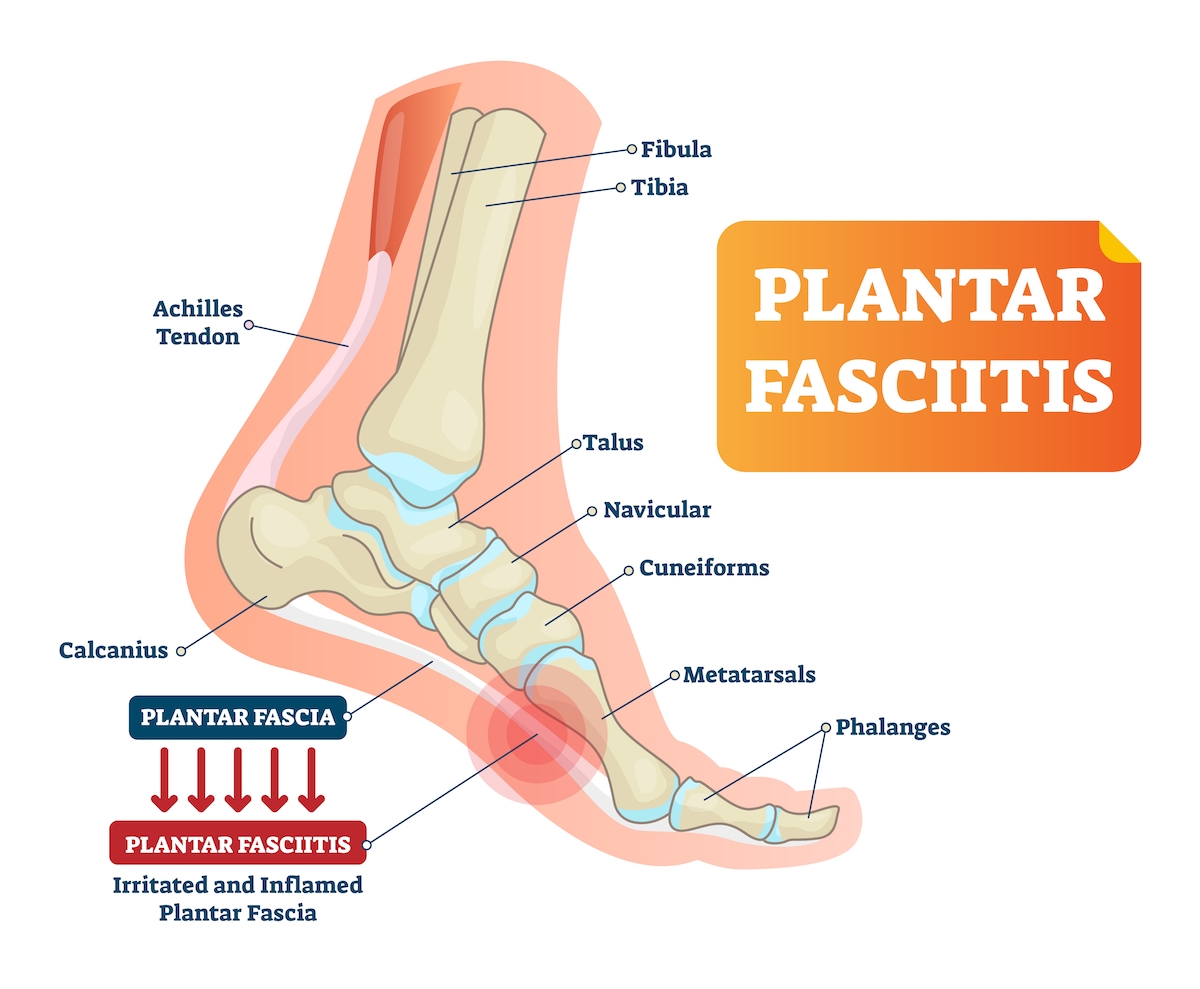
- Plantar Fasciitis: The leading cause of heel pain, this occurs when the fascia (connective tissue that runs along the bottom of the foot) stretches or tears. People who run and jump a lot are more likely to develop plantar fasciitis. Using a treadmill for exercise or working while standing for long periods of time on a concrete floor can also contribute to this painful condition. Irritants. It’s sometimes referred to as Runner’s Heel and affects about 10% of all runners over the course of their career.7
- Heel Spurs: Chronic plantar fasciitis can cause heel spurs, bony growths on the heel. Typically, these aren’t painful, but some people experience pain.
- Bone Bruise (Contusion): Stepping on a hard, sharp object can bruise your fat padding under the heel. It may not visibly bruise, but this will cause pain when walking.
- Stress Fractures: Bone fractures in the feet can cause pain on the back, bottom, or side of the heel.
6 Common Causes of Heel Pain – Morning vs. Night
Here are some common causes for heel pain based on when the pain occurs.
In the Morning

- Plantar Fasciitis: If your heel pain is worse in the morning or after sitting for a long period of time, that’s another sign it may be plantar fasciitis. After a few minutes of walking, the pain typically decreases because it stretches the fascia.
At Night

- Restless Leg Syndrome: A dopamine imbalance that confuses the nerves that send signals to the brain. This syndrome doesn’t just cause legs that can’t stay still, but also burning, tingling, and pain when lying down. It can occur from the waist down including the feet.
- Pinched Nerves: Pinched nerves in the back, hips, legs, and feet can cause foot pain at night. This can be caused by sleeping positions or injuries.
- Morton’s Neuroma: Caused by thickening of the nerves surrounding the toes (commonly the third and fourth), is a condition that affects more men than women. It causes burning, tingling, and cramping that worsen worsens at night.
- Bunions: Hard deposits of bone on the side of the foot just below the big or pinkie toe can cause toe pain at night that radiates sideways through the rest of the heel.
- Growing Pains: The most common cause of child foot pain. Growing pains do not occur because of growth spurts in the bones that outpace the muscles and tendons. Rather, gait imbalance, structural issues (knock-knees/pigeon-toes), poor posture, flat feet, feet that point outward, and fatigue can all lead to stabbing pain in the feet at night.
What Increases Your Risk of Heel Pain?
Risk factors for heel pain include anything that puts pressure and stress on your feet including:
- Running or jumping a lot, in sports or while exercising
- Having flat feet or high foot arches
- Having foot and ankle arthritis
- Being overweight
- Wearing ill-fitting shoes without arch support
- Spending a lot of time standing, especially on concrete floors
Heel Pain Relief
Pain shouldn’t interfere with your life. There are steps you can take to relieve your pain at home and during therapy.
6 Options for At Home Pain Relief
1. Foot Massage
Massage can help relieve pain from tired, aching feet and heels. Use a massage creme for a soothing option that hydrates your skin and relieves soreness. For a quick and easy massage, even on-the-go, use a foot roller. TheraBand Foot Roller can be placed in the fridge or freezer for cooling relief that helps reduce pain and inflammation. It comes with instructions from a licensed physical therapist so you can get the heel pain relief you need!
2. Heat Therapy
Heat therapy can provide temporary relief for your pain. Paraffin wax treatments are a great solution for reducing pain from arthritis and inflamed joints. They can also help improve joint mobility. Get your paraffin wax heating unit today!
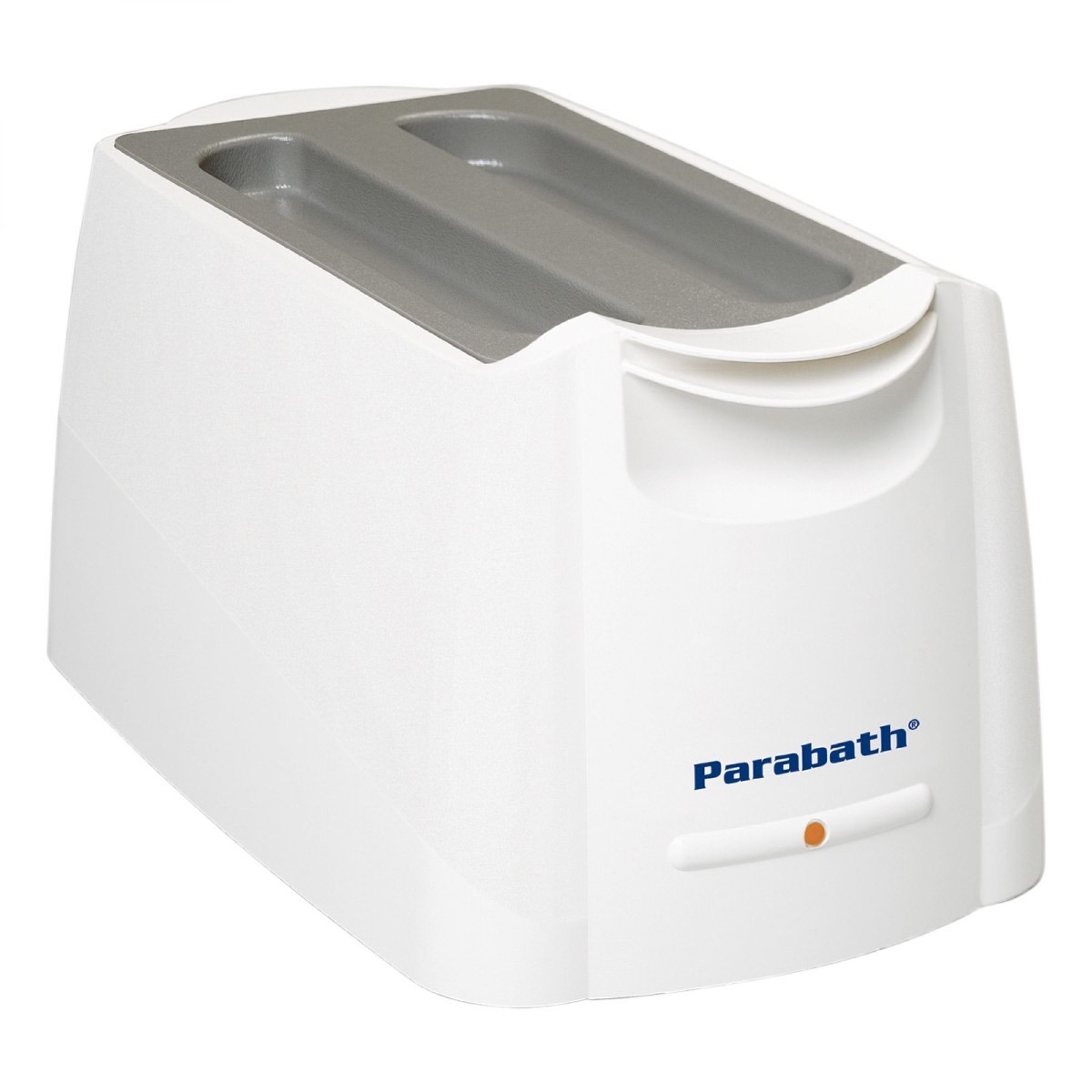
3. Stretching Exercises
Foot and heel stretching exercises can help relieve tight muscles and tendons. Find exercises to get you started in the next section of this article and talk to a medical professional for more exercise ideas.
4. Orthotics
Adding orthotics to your shoes gives your feet the support they need. Orthotics and insoles can help support flat feet and high arches and provide cushion support for people who spend a lot of time on their feet, such as nurses, clinicians, cooks, housekeepers, construction workers, and factory workers. There are insoles that you can buy and put in your shoes yourself. But for custom fit orthotics, you’ll need to see a podiatrist who can use a heat gun to customize them to exactly what you need.
5. Supports
If plantar fasciitis is the cause of your foot pain, a brace can help. There are ones designed to be worn during the day to provide arch support and relieve discomfort. The Rolyan Plantar Fasciitis Support can be worn under inside your shoe. Other supports should be worn at night to keep the foot stretched and help prevent tightness after waking up. The Rolyan R-Soft Plantar Fasciitis Stretch Splint can help relieve nightly discomfort due to plantar fasciitis or Achilles tendonitis. For an extra stretch, choose the Sammons Preston Deluxe Plantar Fasciitis Splint that includes an optional foam wedge. Choose the best splint for your needs!
6. Taping
Using athletic tape or kinesiology tape can help support your foot and reduce your heel pain. A physical therapist or athletic trainer can apply the tape during a session. If you’d like to try yourself, check out these kinesiology taping videos!
Plantar Fasciitis
Achilles Tendonitis
Kinesiology Tape

Professional Heel Pain Treatment
If you have heel pain that doesn’t improve with rest or pain relievers, that makes walking difficult, or that causes severe swelling/stiffness, it’s time to see a doctor. A medical professional can help diagnose the cause of your pain and ensure you get the proper treatment. Your doctor will perform a physical exam and may request further tests like an x-ray.
Depending on the results, your doctor may recommend:1
- One of the at home treatments listed above
- Steroid injections to relieve pain and swelling. This is more common for plantar fasciitis, bursitis, and other inflammation-based problems, but is rarely used for tendon problems
- Seeing a podiatrist for custom-fit orthotics
- Seeing a physical therapist exercises, stretches, and other therapies
- Seeing a massage therapist to break up soft tissue adhesions and reduce pain and inflammation
- Surgery (rarely)
- Other treatments depending on the cause of your heel pain
Heel Pain Exercises
One study found that “Plantar fascia stretching exercises resulted in most significant improvement in [plantar fasciitis patients], followed by treatment with heat and silicone heel pad and calf stretching exercises”.
Stretching exercises are a great way to relieve plantar fasciitis and other types of heel pain. Here are some ideas to get you started.
TheraBand Foot Roller Exercises
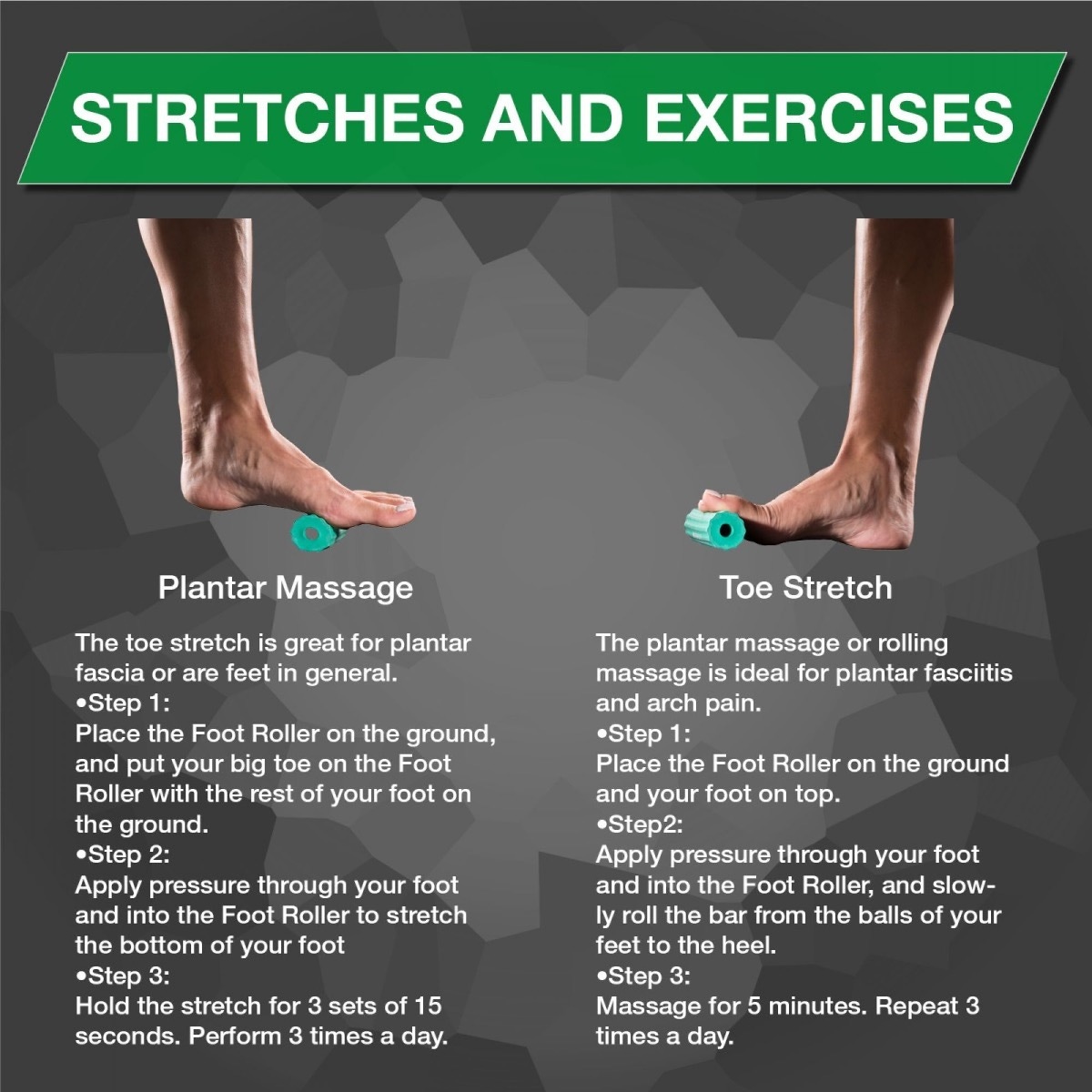
Plantar Massage
Toe Stretch
- Place Foot Roller on the ground and put your big toe on the Foot Roller with the rest of your foot on the ground
- Apply pressure through your foot and into the Foot Roller to stretch the bottom of your foot
- Hold the stretch for three sets of 15 seconds on each foot. Perform three times a day
- Place Foot Roller on the ground and your foot on top
- Apply pressure through your foot and into the Foot Roller, and slowly roll the bar from the balls of your feet to the heel
- Massage for five minutes on each foot. Repeat three times a day
Watch this video for 5 things you should do every morning to help relieve your plantar fasciitis pain.
You'll need:
- A belt or towel
- Supportive shoes
Exercises:
- 5 Toe Stretch
- Stretching Massage
- Calf and Hamstring Stretch
- Alphabet Warm-Up
Looking for Achilles tendonitis exercises? Watch this video to get started!
You'll need:
- A belt or towel
- A wall
- Slant board
- Stairs
Exercises:
- Cross Fiber Friction Massage
- Belt Stretch
- Wall Stretch
- Slant Board Stretch
- Toe Raises
- Single Toe Raises
- Stair Toe Stretches
Learn More About Relieving Foot and Heel Pain
- Plantar Fasciitis: What It Is & How to Treat It
- Six Ways to Relieve Pain from Wearing High Heels
- 21 Pain Relief Solutions for Dancers
- Let’s Talk About Pain Relief for Nurses
- Quick Blister Prevention & Treatment for Athletes
References
1. Cleveland Clinic Medical Professional. (April 2021). Heel Pain. Cleveland Clinic. Retrieved from https://cle.clinic/3zgSu8s
2. NHS. (July 2021). Heel pain. NHS inform. Retrieved from https://bit.ly/2XoEwEX
3. Mayo Clinic Staff. (March 2021). Heel pain. Mayo Clinic. Retrieved from https://mayocl.in/2Xo5LPi
4. Heel Pain (Plantar Fasciitis). (n.d.) Foot Health Facts The Official Consumer Website of American College of Foot and Ankle Surgeons. Retrieved from https://bit.ly/3AhRiTP
5. Mayo Clinic Staff. (March 2021). Heel pain. Mayo Clinic. Retrieved from https://mayocl.in/3EmE0rr
6. Arizonapain. (November 2020). How To Relieve Foot Pain At Night: 13 Tips. Arizona Pain. Retrieved from https://bit.ly/3Ah7oNz
7. O’Mara, K. (March 2014). How To Treat And Beat Plantar Fasciitis. Podium Runner. Retrieved from https://bit.ly/3zf4do7
Medical Disclaimer: The information provided on this site, including text, graphics, images and other material are for informational purposes only and are not intended to substitute for professional medical advice, diagnosis or treatment. Always seek the advice of your physician or other healthcare professional with any questions or concerns you may have regarding your condition.








 France
France Australia
Australia
